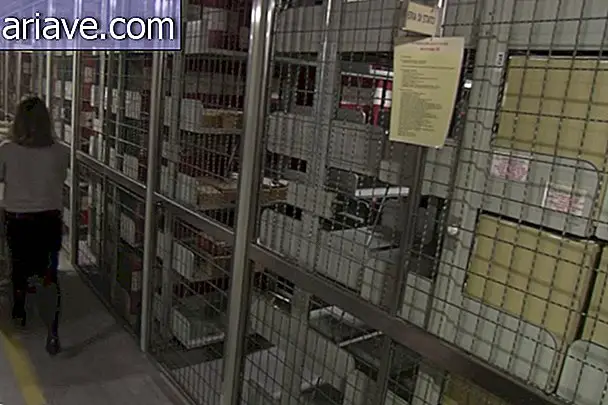Have you heard of a place known as the “Cave of the Dead”?
"Cave of the Dead" - a place with such a name can only be linked to a macabre story, right? If this is what you thought, know that you are not mistaken! This peculiar cave is located in Moray, a coastal town in northern Scotland, and consists of a hard-to-reach archaeological site that was officially named “Sculptor's Cave” in the mid-19th century.

And why did she become known by that sinister name? According to Tom Metcalfe of the Live Science website, to begin with, right at the entrance to the cave, there are a lot of symbols that were supposedly carved there to forbid the entry of onlookers, not to mention the evidence found there that points out that the place was the scene of a possible massacre and was used to deposit human corpses. Sinister, right?
Macabre past
According to Tom, archaeologists believe that the symbols engraved in the cave were created by the Picts - a people who inhabited the territory that corresponds today to Scotland during the Bronze Age and early Middle Ages - and which have not been deciphered to this day. The suspicion is that the drawings may represent names of people or tribes or, perhaps, be some kind of alert to possible invaders.

In addition, during excavations, first in the 1920s and later in the 1970s, various Bronze Age artifacts were found inside the cave, such as fragments of clothing, hair ornaments and human remains. Based on the findings and traces detected at the site, scientists think the site was used by the Picts to deposit their dead until their bodies rotted and the bones could be “cleaned up” and collected.

Evidently, the cave appears to have begun to be used for burial rituals around the year 1000 BC - and archaeologists have found human bones with traces of manipulation, such as signs of cutting and polishing. The place seems to have served this purpose during the Bronze Age, then in the Iron Age and even during the Roman occupation of the region, but by the year 400 of the Christian era, the activity seems to come to an end, coinciding with the Engraving of symbols at the cave entrance.

However, archaeologists have found evidence of one more thing that seems to have rolled into place. Scientists have discovered several bones indicating that the cave would have served as a stage for human sacrifice, bloody massacre or execution. Radiocarbon dating indicated that the event took place in the middle of the 3rd century, and the skeletons belong to several individuals, and at least six of them show signs of decapitation.

Virtual access
As we mentioned in the beginning of the story, the Cave of the Dead is a place that few people dare to snoop. This is because, in addition to all the superstitions that surround the place, the entrance - this and many other caves that spread throughout the region - faces the sea and only stays accessible when the tide is low.

However, if you enjoy stories of macabre past sites and are interested in seeing the cave, we have good news: a team of scientists have just completed the three-dimensional mapping of the Cave of the Dead and the result will be turned into a “virtual tour”. In fact, it is already possible to take a preliminary "walk" inside the cave! It's not the same as going there personally, but you can kill a little bit of curiosity. Look:











